
Burgruine Schönrain: A Window to Franconian History
Explore the atmospheric ruins of Burgruine Schönrain near Gemünden am Main, a historic Benedictine monastery turned noble residence offering panoramic views and a glimpse into Franconian history.
Perched high above the Main River, Burgruine Schönrain offers a captivating glimpse into Franconia's rich past. Originally founded around 1080 as a Benedictine monastery, it faced destruction during the German Peasants' War in 1525. The Counts of Rieneck rebuilt it as a residential castle, only for it to fall into disrepair after their lineage ended. Today, the ruins stand as a testament to the region's layered history, with well-preserved walls, graceful window arches, and a climbable tower offering panoramic views of the Main valley and the Spessart forest. Explore the atmospheric ruins, imagine life within its walls, and enjoy the tranquil natural setting. The site is freely accessible, making it an ideal destination for history buffs, nature lovers, and anyone seeking a peaceful escape. Keep an eye out for the diverse wildlife that now calls the ruins home, including rare owls and bats.
A brief summary to Burgruine Schönrain
- Gemünden am Main, 97737, DE
- Visit website
- Monday 12 am-12 am
- Tuesday 12 am-12 am
- Wednesday 12 am-12 am
- Thursday 12 am-12 am
- Friday 12 am-12 am
- Saturday 12 am-12 am
- Sunday 12 am-12 am
Local tips
- Wear sturdy shoes, as the terrain within the ruins can be uneven.
- Bring a picnic to enjoy the scenic views from the castle grounds.
- Visit during the shoulder seasons (spring or fall) for pleasant weather and fewer crowds.
- Check the local event calendar for historical reenactments or cultural events held at the ruins.
- Combine your visit with a hike in the surrounding Spessart forest for a full day of outdoor adventure.
Getting There
-
Walking
From the parking area on MSP11 between Hofstetten and Steinbach, follow the well-marked hiking trail uphill through the forest. The walk is approximately 1.7 km and takes about 30 minutes. The path is moderately steep in sections. Note that there are no public transport options that go directly to the Burgruine Schönrain, so walking from the designated parking is the most common way to access the site.
-
Driving
If driving, navigate to MSP11 between Steinbach and Hofstetten. There is a designated parking area available for visitors. Parking fees may apply, but are typically minimal. From the parking area, follow the walking directions to reach the Burgruine Schönrain. Be aware that the final approach involves a 30-minute uphill walk.
Discover more about Burgruine Schönrain
Iconic landmarks you can’t miss
Sitzbank aus Sandstein
6.4 km
Discover the serene Sitzbank aus Sandstein in Lohr am Main, a charming spot to relax and enjoy the beauty of the surrounding nature and local culture.
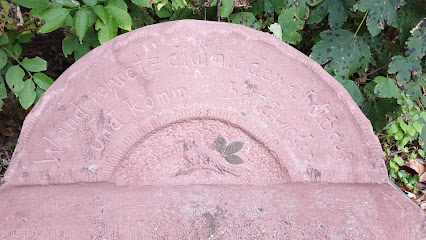
Bayersturm
7.1 km
Explore Bayersturm, a medieval tower in Lohr am Main, steeped in history and architectural beauty, perfect for memorable photos and cultural immersion.
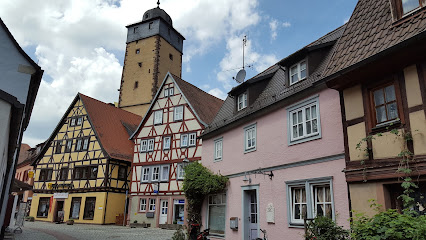
Steinernes Haus
9.9 km
Explore the architectural beauty and historical significance of Steinernes Haus in Rothenberg, a captivating landmark reflecting the region's rich heritage.
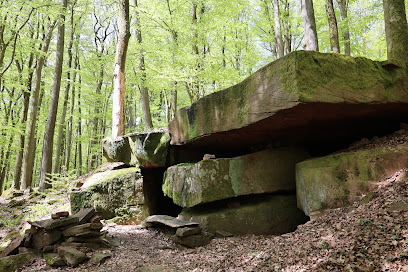
Staabskreuz
19.4 km
Explore the tranquil beauty of Staabskreuz in Rothenbucher Forst, a perfect retreat for nature lovers and adventure seekers alike.

Hotel Spechtshaardt
20.5 km
Experience the warmth of Rothenbuch at Hotel Spechtshaardt, where comfort meets local charm amidst stunning landscapes and delicious German cuisine.
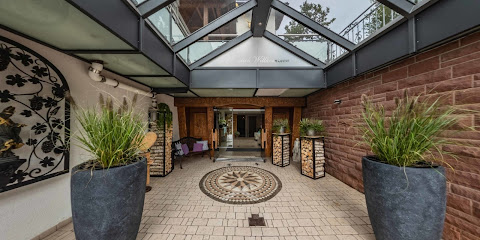
Schatzhaus im Spessart
23.9 km
Explore a unique rock shop in the Spessart region, offering stunning stones, minerals, and handcrafted gifts that embody the beauty of nature.
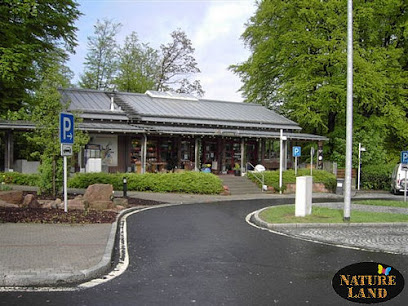
Touristikverband e.V. RÄUBERLAND
29.3 km
Explore the enchanting landscapes of Heimbuchenthal at the RÄUBERLAND Tourist Information Center, your gateway to adventure and culture.
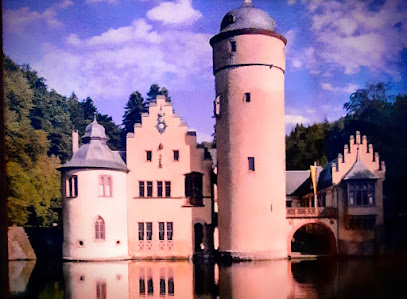
Bildeiche bei Albertshausen
30.9 km
Experience the grandeur of the Bildeiche bei Albertshausen, an ancient oak tree that stands as a symbol of nature's beauty in Bad Kissingen.
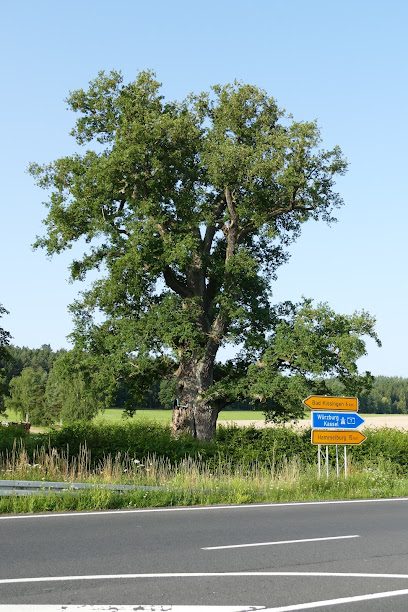
Bürgerbräu Park
31.4 km
Explore the tranquil Bürgerbräu Park in Würzburg, a serene oasis perfect for relaxation, leisurely strolls, and enjoying nature's beauty.
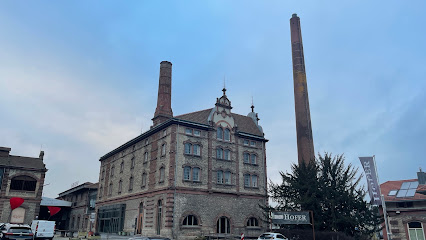
Morellibank
31.5 km
Explore the historic allure of Morellibank in Würzburg, a captivating landmark that embodies the city's rich cultural heritage and picturesque landscapes.
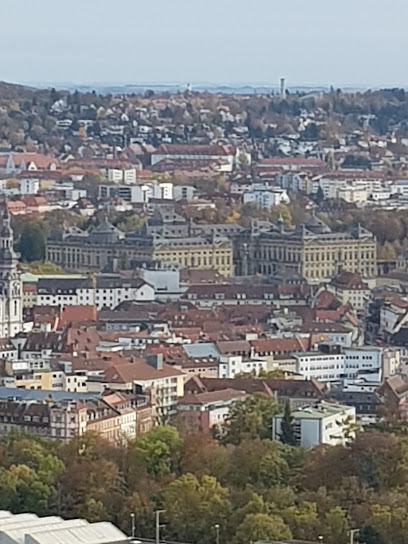
Bridge of Peace
32.1 km
Explore the Bridge of Peace in Würzburg, a stunning pedestrian bridge offering breathtaking views and connecting history with modernity in a scenic landscape.
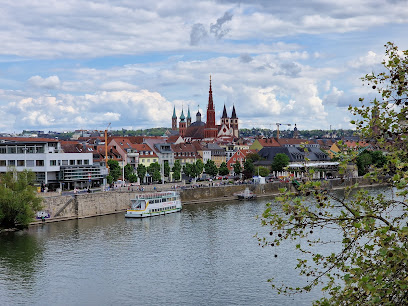
DenkOrt Memorial of the deportations in 1941-1944
32.5 km
Explore the DenkOrt Memorial in Würzburg, a poignant tribute to the victims of deportations from 1941 to 1944, fostering remembrance and reflection.
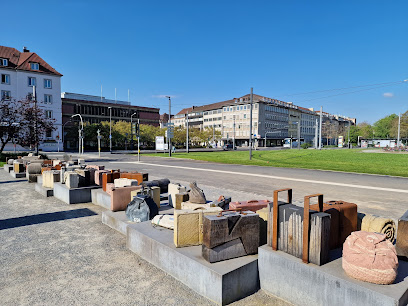
Statue of Julius Echter
32.6 km
A bronze tribute to Prince-Bishop Julius Echter in Würzburg's Old Town, commemorating his complex legacy and contributions to the city's history and culture.
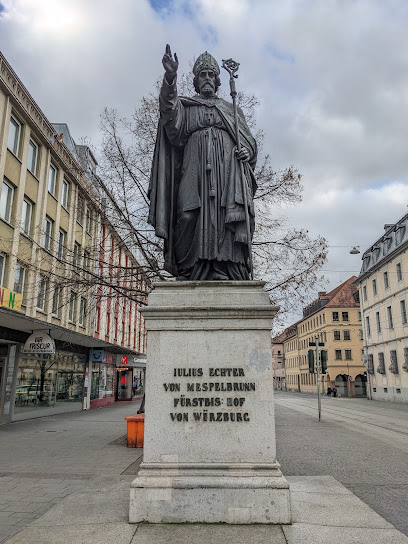
Reichsravelin
32.6 km
Immerse yourself in the rich history of Würzburg at Reichsravelin, a stunning historical landmark showcasing military architecture and beautiful views.
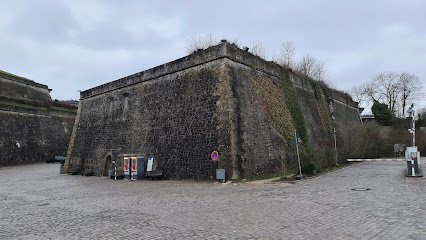
Brunnen am Dominikanerplatz
32.6 km
Discover the charm of Brunnen am Dominikanerplatz, a beautiful fountain in Würzburg's historic Old Town, perfect for relaxation and cultural immersion.
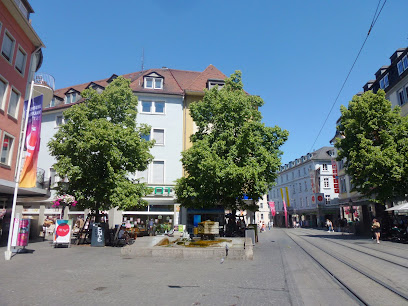
Unmissable attractions to see
Huttenschloss
3.8 km
Discover Huttenschloss in Gemünden am Main: A captivating castle, film and photograph library, and museum offering a unique journey through history, culture, and art.

Scherenburg Castle Ruin
3.8 km
Explore the historic Scherenburg Castle Ruin in Gemünden am Main, offering panoramic views, medieval history, and a vibrant open-air theatre festival in the castle courtyard.
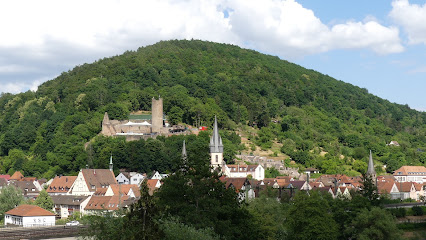
Mariabuchen
5.3 km
Discover the spiritual serenity and Baroque splendor of Mariabuchen Abbey, a historic pilgrimage site nestled in the scenic Spessart region near Lohr am Main.
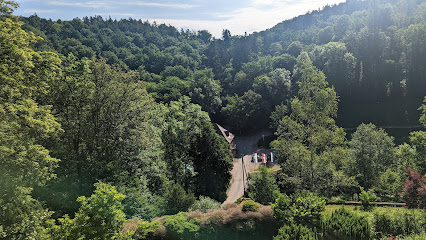
Isolatorenmuseum
7.0 km
Discover a world of electrical insulators in a former transformer station in Lohr am Main, Germany, showcasing over 600 pieces from 40 countries, a unique collection.

Spessartmuseum
7.1 km
Discover the enchanting world of the Spessart region at the Spessartmuseum, where history, folklore, and natural beauty come together in a captivating experience for all ages.
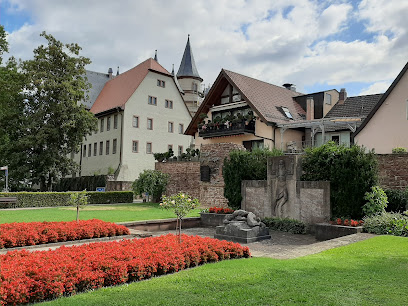
Schloß zu Lohr am Main
7.1 km
Explore Schloss Lohr in Lohr am Main, a historic castle housing the Spessart Museum, with ties to the Snow White fairytale, offering a glimpse into Bavarian history and culture.
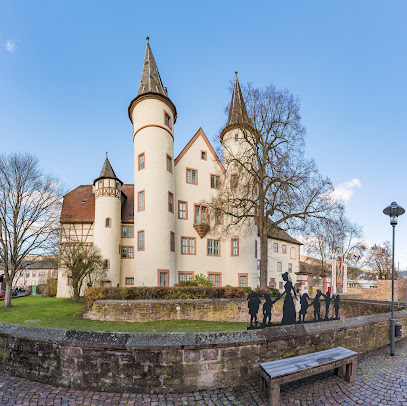
Schneewittchenweg
7.7 km
Hike through the enchanting Spessart forest on the Schneewittchenweg, where the timeless tale of Snow White comes to life amidst stunning natural beauty and local folklore.
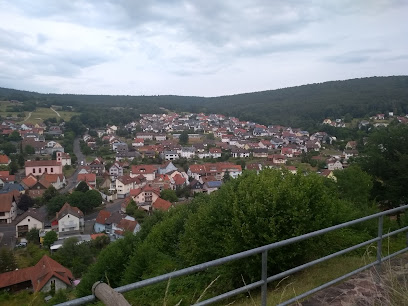
Schanzkopf Hütte
8.4 km
Experience the tranquility and culinary delights at Schanzkopf Hütte, a serene escape in the heart of Lohr am Main's stunning landscape.
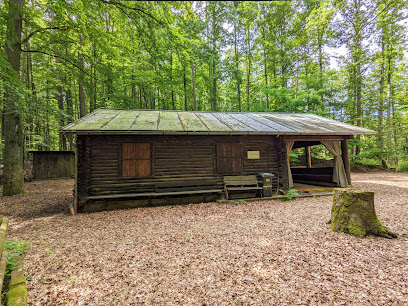
Karlsburg Castle
10.6 km
Explore the historic ruins of Karlsburg Castle in Karlstadt am Main, offering panoramic views of the Main River valley and a glimpse into the region's rich past, easily accessible by scenic hiking trails.

Kirchenburg Aschfeld
12.3 km
Explore the medieval Kirchenburg Aschfeld in Eußenheim, a Franconian fortress church and open-air museum offering a glimpse into village life through well-preserved architecture and historical exhibits.
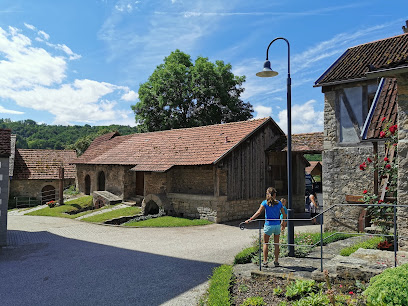
Tretstein-Wasserfall
13.3 km
Discover the enchanting Tretstein Waterfall near Gräfendorf, a natural monument offering a refreshing escape into the scenic beauty and geological wonders of the Bavarian Rhön.
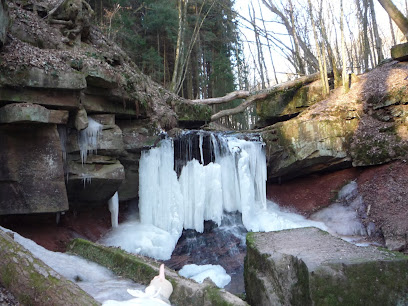
Ausstellung Weihnachtspostamt
15.7 km
Discover the magic of Christmas year-round at Bavaria's only Weihnachtspostamt in Himmelstadt, where heartfelt letters from around the world find their way to the Christkind.
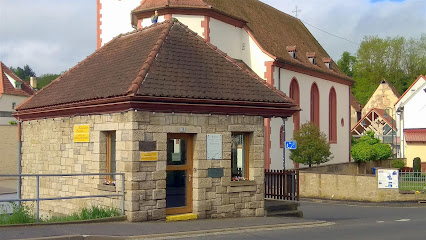
Sinngrund
15.8 km
Discover Sinngrund, Bavaria: A serene nature preserve with scenic hiking, lush landscapes, and tranquil river valleys, perfect for outdoor adventures and peaceful escapes.
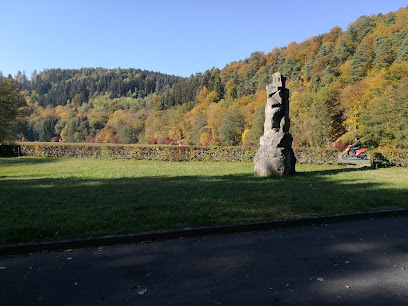
Burg Rothenfels
16.2 km
Discover Burg Rothenfels, a historic Bavarian castle offering stunning views, a rich cultural heritage, and a unique blend of medieval charm and modern hospitality in the heart of Franconia.

Spessart - Gresselwald
16.3 km
Discover the enchanting Spessart Forest: Hike through ancient woodlands, explore historic villages, and immerse yourself in nature's tranquility in the heart of Germany.
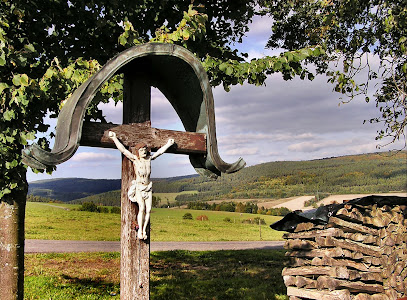
Essential places to dine
Main Spessart Terrasse Hotel & Restaurant
3.3 km
Discover exquisite German cuisine with stunning views at Main Spessart Terrasse in Gemünden am Main.
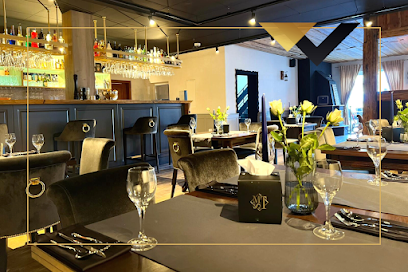
Gasthof Küferstube
6.7 km
Experience authentic German cuisine and cozy accommodations at Gasthof Küferstube in Lohr am Main.
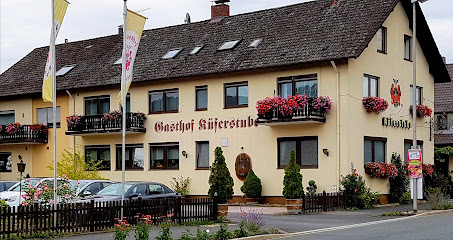
Schönbrunnen Lohr
7.1 km
Experience the best of German cuisine at Schönbrunnen Lohr, where tradition meets flavor in every bite.
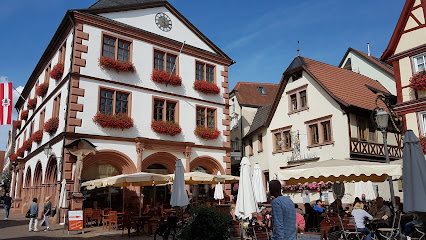
Keiler Brauhaus
7.3 km
Discover the rich flavors of Germany at Keiler Brauhaus – where local brews meet traditional Franconian cuisine.
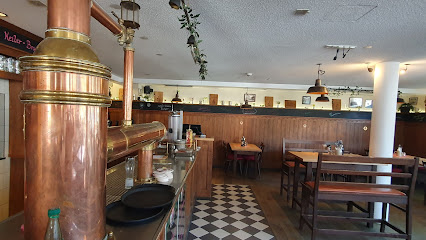
Hotel-Restaurant Schwarzkopf
13.3 km
Experience exquisite European cuisine and comfortable accommodations at Hotel-Restaurant Schwarzkopf in Frammersbach.
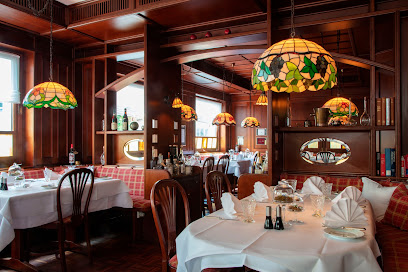
Zur Traube
13.5 km
Experience authentic German cuisine at Zur Traube in Frammersbach – where tradition meets culinary innovation.
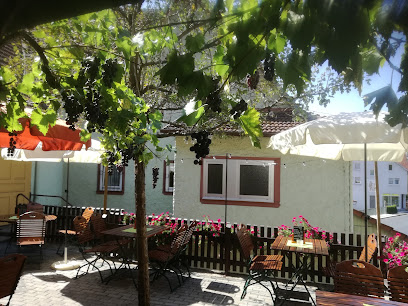
Gasthaus im Hochspessart
17.2 km
Experience authentic German cuisine and cozy accommodations at Gasthaus im Hochspessart in Rothenbuch - your perfect retreat in nature's embrace.
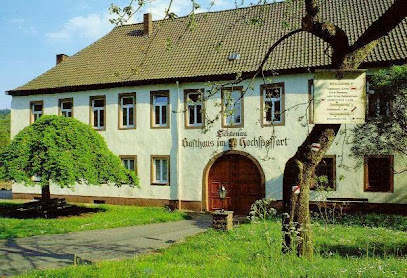
Landgasthof Engelhard
18.2 km
Experience authentic German cuisine at Landgasthof Engelhard in Karbach – where tradition meets flavor in every dish.
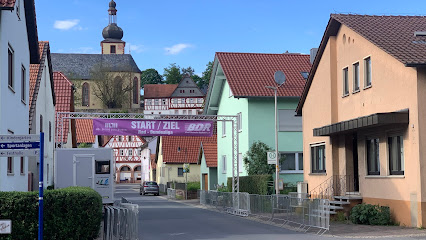
Zur frischen Quelle
18.3 km
Experience authentic German cuisine at Zur frischen Quelle in Frammersbach—home to unforgettable schnitzels and warm hospitality.
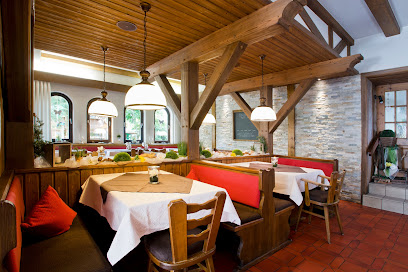
Forsthaus Sylvan Wandergaststätte
19.1 km
Discover Forsthaus Sylvan: A charming restaurant and beer garden perfect for hikers and families in scenic Bischbrunn.
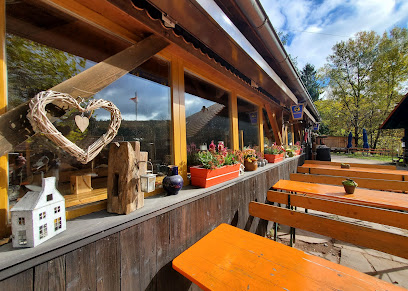
Wirtshaus Heygerbruck GbR
20.1 km
Discover the charm of Wirtshaus Heygerbruck: A delightful inn and gastropub offering authentic German cuisine in scenic Heigenbrücken.
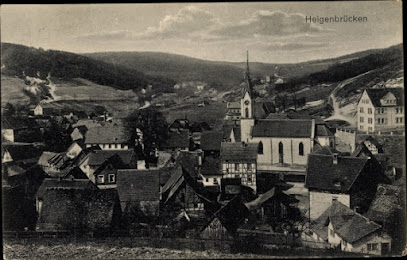
Ristorante Monte Carlo
21.0 km
Experience authentic Italian flavors at Ristorante Monte Carlo in Esselbach—where every meal is a celebration of culinary excellence.
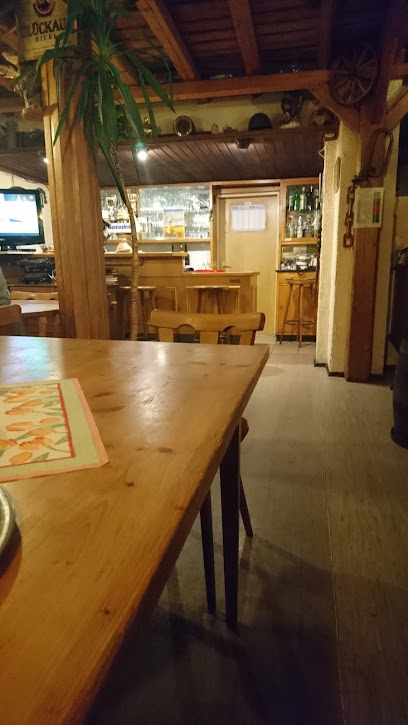
Bräustüble
21.2 km
Experience authentic Franconian cuisine at Bräustüble in Marktheidenfeld – where tradition meets flavor in every dish.
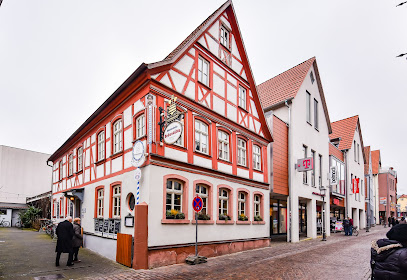
Villa Spessartruh
23.6 km
Experience the charm of Villa Spessartruh – where delicious food meets refreshing brews in a serene beer garden setting.
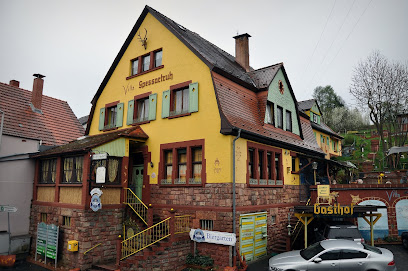
Hotel Jägerhof
24.0 km
Experience exquisite dining and cozy accommodations at Hotel Jägerhof in beautiful Weibersbrunn - where culinary delights meet serene landscapes.

Markets, malls and hidden boutiques
CUBE Store Lohr am Main - bikePoint Rhön GmbH & Co KG
6.7 km
Explore the best of cycling at CUBE Store Lohr am Main - your one-stop destination for quality bikes and expert advice.
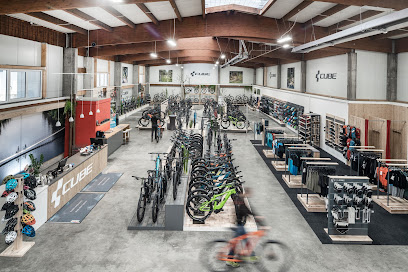
Basti Ihr Bastelladen
7.1 km
Discover Basti Ihr Bastelladen, a delightful craft store in Lohr am Main, perfect for unleashing your creativity and finding unique art supplies.

Buchhandlung Schöningh in Lohr am Main
7.1 km
Discover literary treasures at Buchhandlung Schöningh, a charming bookstore in Lohr am Main, where book lovers find their next great read.

Montana Boutique
7.1 km
Explore Montana Boutique in Lohr am Main for trendy fashion and a delightful shopping experience in a charming setting.
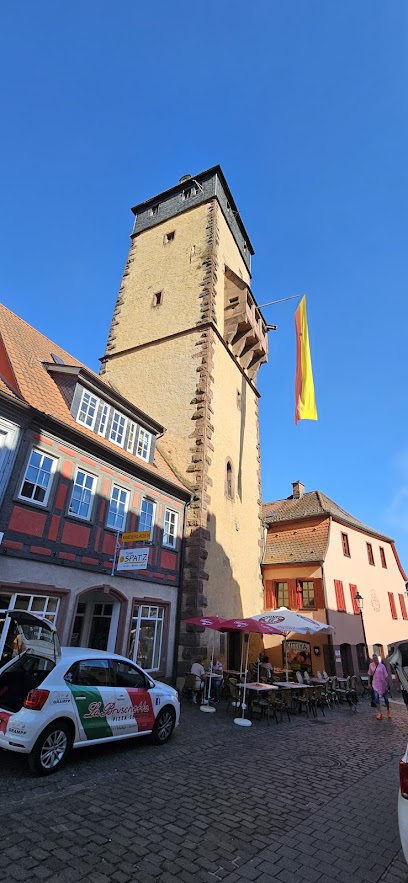
mister*lady
7.1 km
Explore the vibrant fashion scene at mister*lady, your one-stop clothing store in Lohr am Main for stylish outfits and accessories.
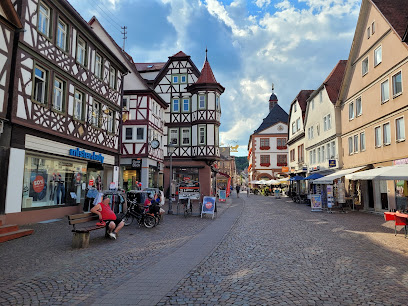
O' Lady
7.1 km
Discover O' Lady, the premier women's clothing store in Lohr am Main, featuring stylish dresses and unique fashion accessories for every occasion.

INTAKT Gebraucht Waren Zentrum Main-Spessart
7.1 km
Explore sustainable treasures at INTAKT Gebraucht Waren Zentrum, a unique used furniture store in the heart of Lohr am Main, Germany.
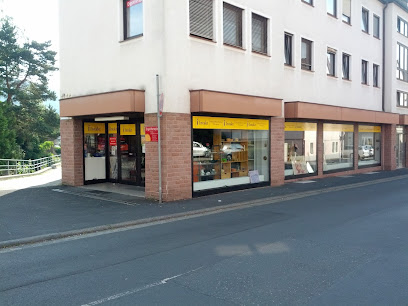
Fassnacht
7.2 km
Explore Fassnacht in Lohr am Main, your one-stop destination for exquisite stationery and unique office supplies, perfect for creativity and inspiration.

BONITA
7.2 km
Discover stylish women's fashion at BONITA in Lohr am Main, where trendy dresses meet charming local flair for the ultimate shopping experience.

Kletterwald Spessart
19.2 km
Experience the thrill of climbing at Kletterwald Spessart, a top destination for adventure lovers in the heart of nature, perfect for families and outdoor enthusiasts.
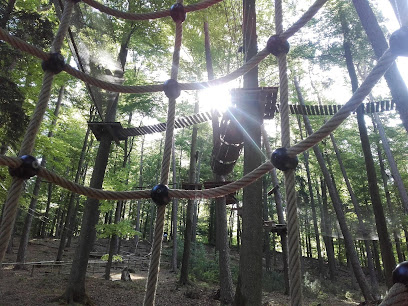
PAIDI Werkverkauf
19.2 km
Explore PAIDI Werkverkauf in Hafenlohr for exquisite furniture that combines style, quality, and affordability in a charming setting.

Montana Conceptstore
20.9 km
Explore the chic and unique offerings at Montana Conceptstore, a boutique in Marktheidenfeld for fashion and lifestyle enthusiasts.
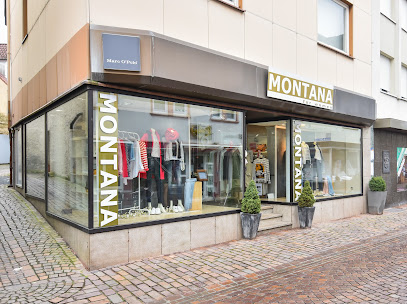
Only
21.2 km
Explore Only in Marktheidenfeld for unique clothing options and a delightful shopping experience in a charming boutique setting.
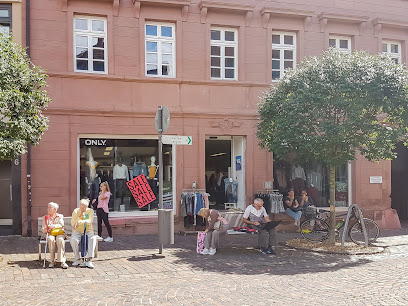
Ein|laden in Lettgenbrunn
22.8 km
Explore local flavors at Ein|laden in Lettgenbrunn, your go-to grocery store for fresh produce and delightful picnic spots.
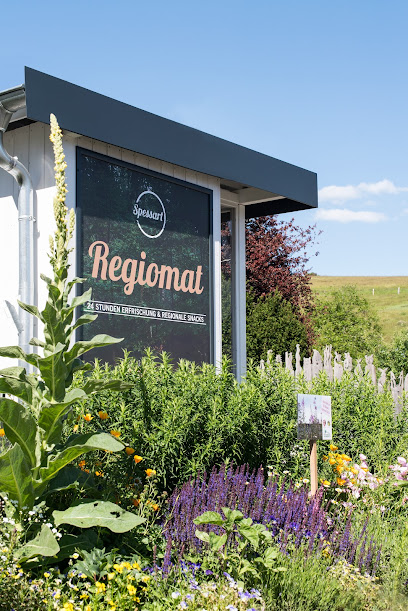
Dies & Das
23.4 km
Explore the enchanting world of flowers at Dies & Das in Weibersbrunn, where every bouquet tells a story.

Essential bars & hidden hideouts
Weinhaus Mehling
7.1 km
Explore Weinhaus Mehling, a charming wine bar and restaurant in Lohr am Main, offering exquisite wines and delicious local cuisine in a cozy atmosphere.
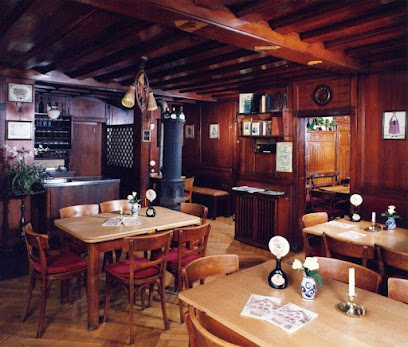
Platin [PT]
7.2 km
Discover the vibrant Platin Lounge in Lohr am Main, offering exquisite cocktails, premium hookah, and an inviting atmosphere for relaxation.
![Platin [PT]](https://evendo-location-media.s3.amazonaws.com/BarImages/58d11f6f-9d72-4511-877a-f9ce23698e27)
Grüner Baum
9.0 km
Experience authentic German hospitality at Grüner Baum in Lohr am Main, where cozy ambiance meets delicious local brews and hearty dishes.
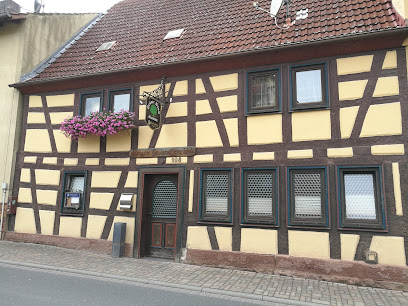
Alabama Bar
13.8 km
Experience the vibrant atmosphere of Alabama Bar in Frammersbach, where delightful drinks and friendly locals create unforgettable nights.
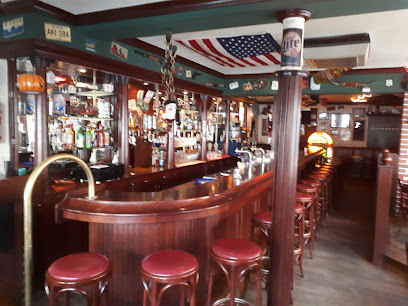
Altes Forsthaus Heigenbrücken
20.6 km
Experience the best of local cuisine and fine wines at Altes Forsthaus Heigenbrücken, a perfect blend of nature and culinary delight.
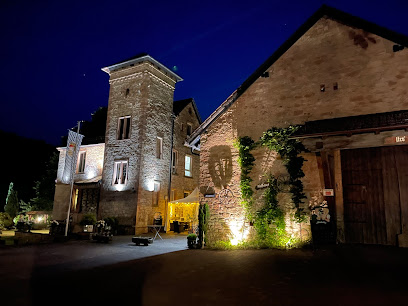
Musikkeller Katakombe
21.1 km
Discover the lively Musikkeller Katakombe in Marktheidenfeld, where live music and a friendly atmosphere create unforgettable nights.
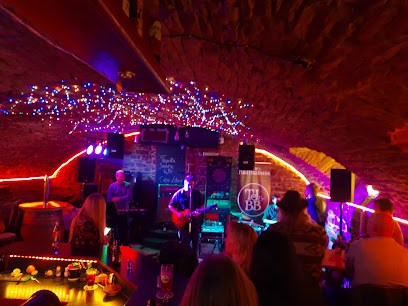
Winners Sport Bar
21.2 km
Experience the thrill of live sports in a vibrant atmosphere at Winners Sport Bar in Marktheidenfeld, where friends meet and memories are made.
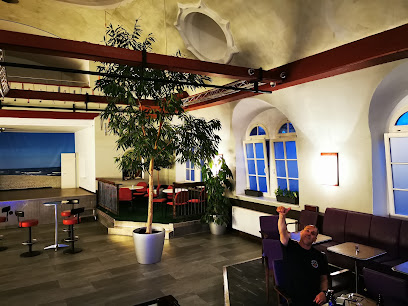
Felsenkeller Zum Neuen Brauhaus 1816
21.9 km
Discover the essence of German hospitality at Felsenkeller Zum Neuen Brauhaus 1816, where tradition meets flavor in Marktheidenfeld.
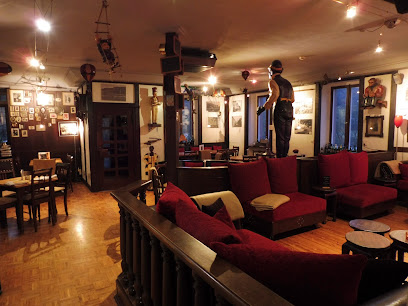
Spessarttor
23.8 km
Explore the lively atmosphere of Spessarttor, a vibrant bar and live music venue in Hain im Spessart, perfect for a night of entertainment.

Gasthof Spessartruh Steiger
28.3 km
Discover the charm of Gasthof Spessartruh Steiger, a delightful inn in Bessenbach that offers Bavarian hospitality, local cuisine, and a scenic beer garden.
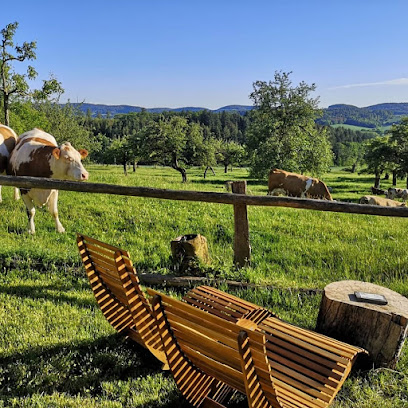
Cocktailchef Rhein Main
30.5 km
Experience innovative cocktails and a vibrant setting at Cocktailchef Rhein Main, your go-to destination for a delightful night out in Blankenbach.

S Bar L
31.1 km
Discover the vibrant atmosphere of S Bar L in Hösbach, where exquisite cocktails meet local charm for an unforgettable night out.
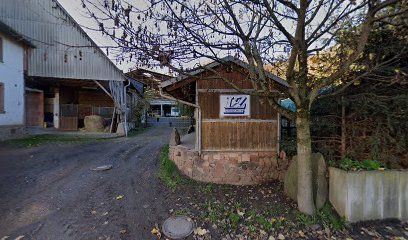
Burgschänke Henneburg Stadtprozelten
32.2 km
Experience authentic German culture at Burgschänke Henneburg Beer Garden in Stadtprozelten, where local brews and delightful cuisine await you.
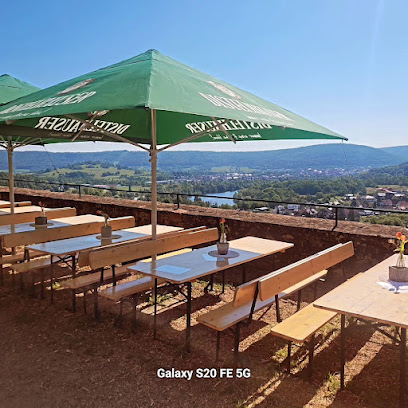
Hotelbar Mainhattan
32.2 km
Experience the perfect blend of elegance and relaxation at Hotelbar Mainhattan in Würzburg, where exceptional drinks meet a stylish atmosphere.
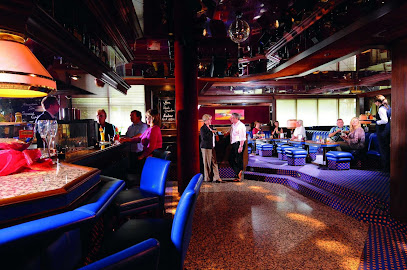
Bar SIGMA - Würzburg
32.4 km
Discover the lively nightlife at Bar SIGMA in Würzburg, offering a unique blend of vibrant atmosphere and expertly crafted cocktails.




